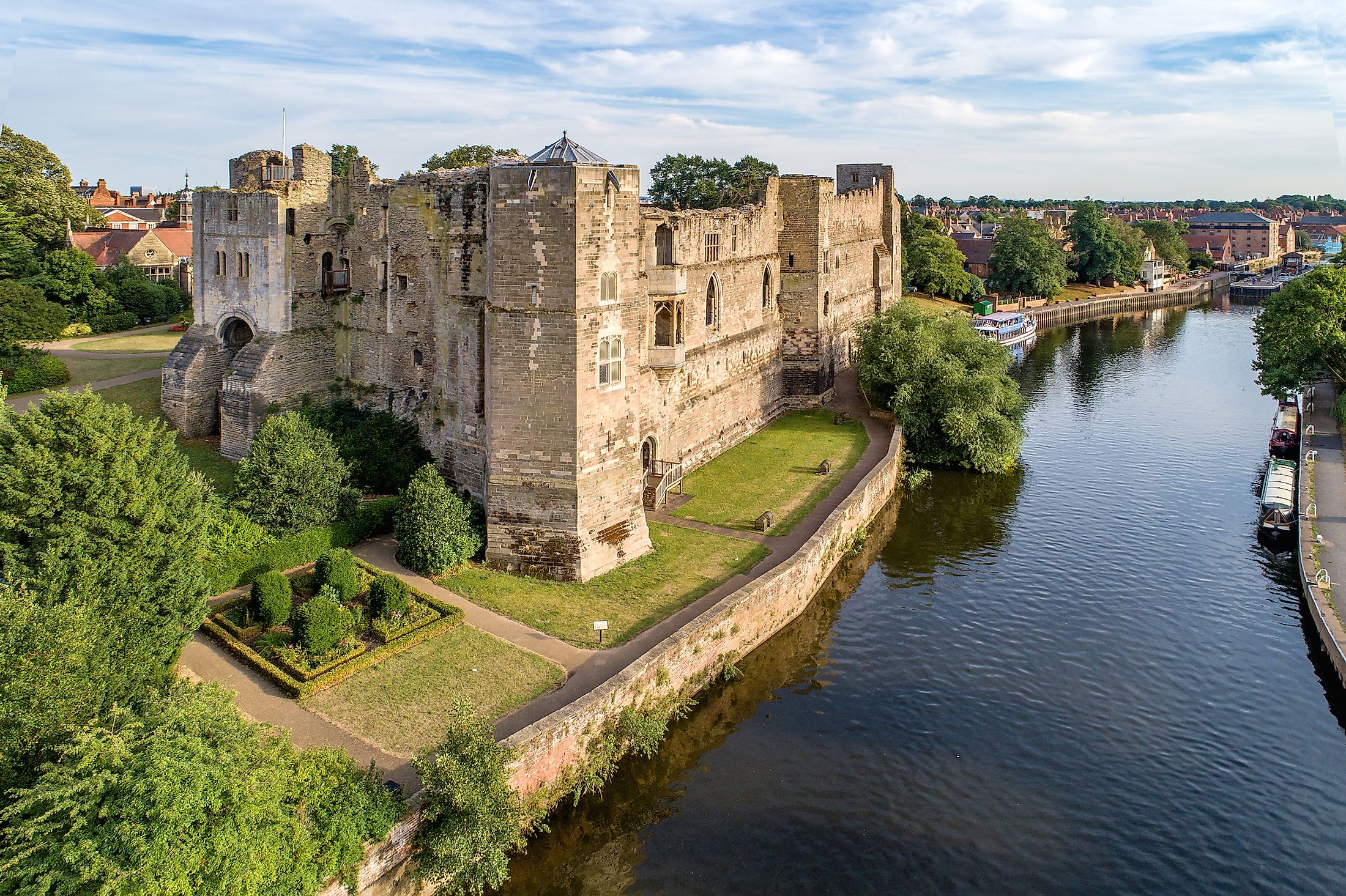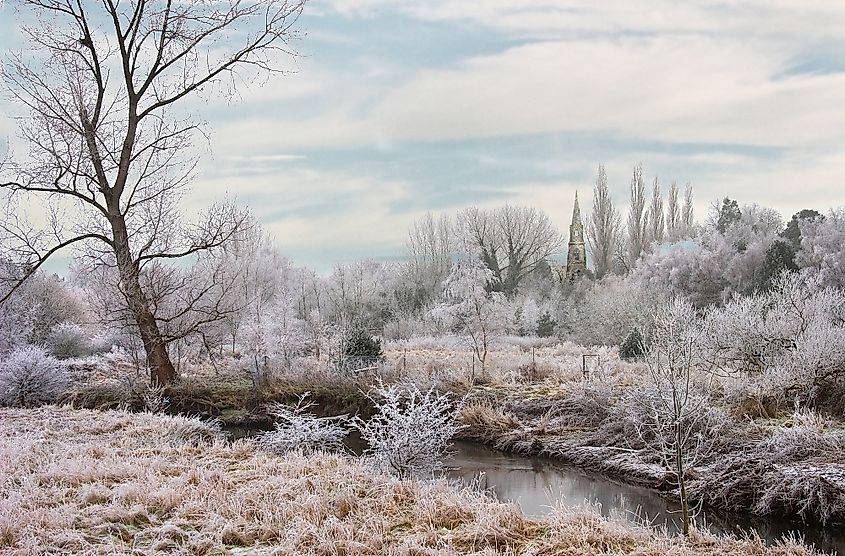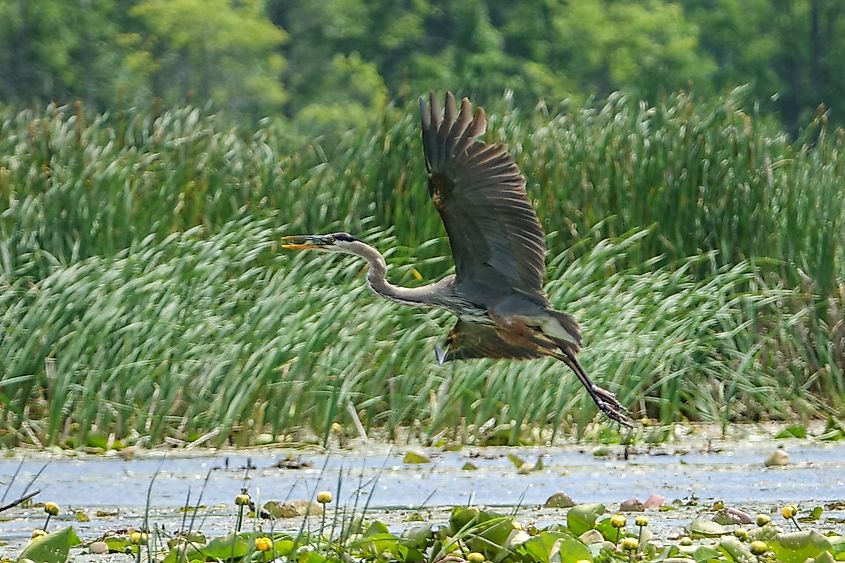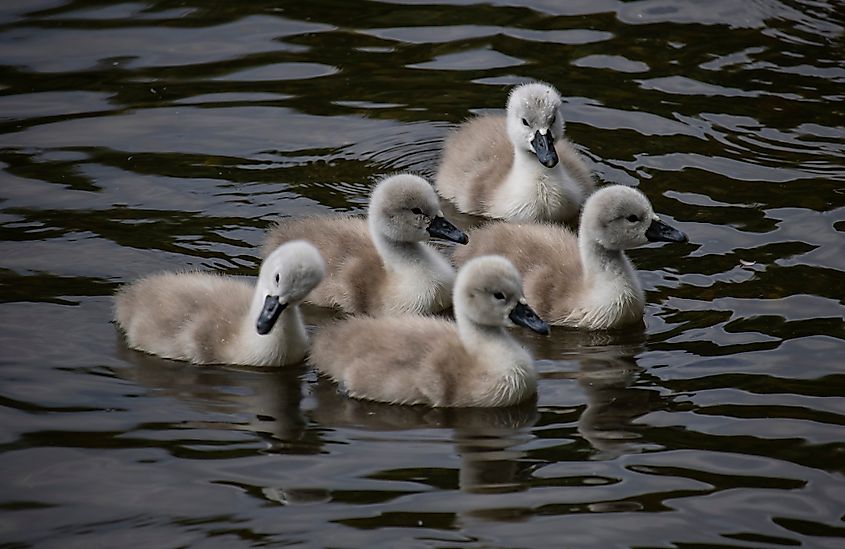
River Trent
The River Trent is the third longest river in England with a length of 298 km, and the second largest in terms of flow, with a basin estimating 10,435 km2. The river originates from Staffordshire, west Midlands of England, on the southern edge of Biddulph Moor. The river passes through Stoke-on-Trent, Stone, Rugeley, Burton upon Trent and Nottingham before joining the Humber Estuary, which empties into the North Sea between Hull and Yorkshire and Immingham in Lincolnshire. Having 42 tributaries, the River Trent flows through and drains most of the metropolitan central and northern Midlands (central part of England) south and east of its source north of Stoke-on-Trent.
Course Of The River

The Trent has several tributaries, most notably the Tame, Dove, Derbyshire Derwent, and many other smaller rivers within its catchment, in addition to the Trent Head Well. It rises within the Staffordshire Moorlands district and is then joined by other small streams to form the Head of Trent, which flows south to the Knypersley reservoir near Biddulph in Staffordshire. It then passes through Stoke-on-Trent downstream of the reservoir and merges with small streams like Lyme, Fowlea and others that drain the six towns of the Staffordshire Potteries. This merge led to the formation of the River Trent. The river then continues south through the market town of Stone and passes the village of Salt where it reaches Great Haywood. At this point, the river is joined by River Sow from Stafford. The Trent now flows south-east past the town of Rugeley until it reaches Kings Bromley and coincides with the Blithe. After the confluence with the Swarbourn, a minor tributary of the Trent, it passes Alrewas and reaches Wychnor, east Staffordshire. The river turns north-east where it is joined by its largest tributary, the Tame and immediately afterwards by the River Mease in the Midlands, creating a larger river that now flows through a broad floodplain. In brief, the Trent flows southeastward, northeastward, and then northward for 168 miles (270 km) before entering the Humber estuary 40 miles (65 km) from the North Sea.

There are several prehistoric events that led the Trent River to acquire its current course. During the Pleistocene epoch (1.7 million years ago), the River Trent rose in the Welsh hills and flowed east from Nottingham through the Vale of Belvoir. Then, it cut a gap through the limestone ridge at Ancaste, Lincolnshire and emptied into the North Sea. At the end of the Wolstonian stage (middle Pleistocene stage), a mass of stationary ice left in the Vale of Belvoir caused the river to divert north along the Lincoln River through the Lincoln gap, now known as the course of the River Witham, east of England. Following a glaciation, the ice held back great areas of water in the current lower Trent basin. When the ice retreated, the Trent adopted its course into the Humber Estuary.
Trent Basin
The Trent basin is located between the drainage basins of the River Severn and its tributary the River Avon from the south and west, the River Weaver from the north-west, the tributaries of the Yorkshire River Ouse from the north and the basins of the Welland, in addition to Witham and Ancholme from the east. The Trent basin covers a significant part of the Midlands, and includes most of the counties of Staffordshire, Derbyshire, Leicestershire, Nottinghamshire and the West Midlands in addition to parts of Lincolnshire, South Yorkshire, Warwickshire and Rutland.
Approximately three quarters of the Trent catchment is given over to agriculture, with land use being mostly rural. Agricultural activities include moorland grazing of sheep in the upland areas. Farming of cereals and root vegetables such as potatoes and sugar beet occur primarily in lowland areas such as the Vale of Belvoir and the lower reaches of the Trent, Torne and Idle.
Geology
Formations of Millstone Grit and Carboniferous Coal Measures underly the upper reaches of the Trent, including layers of sandstones, marls and coal seams. At Sandon, the river crosses a band of Triassic Sherwood sandstone, which is also observed when the Trent flows beside Cannock Chase between Great Haywood and Armitage, south of the Trent. Mercia Mudstones dominate the geology downstream of Armitage. These mudstones form river cliffs at Gunthorpe and Stoke Lock near Radcliffe on Trent. The wider basin has a more varied geology, including the Precambrian rocks of the Charnwood Forest, Jurassic limestone that forms the Lincolnshire Edge and eastern watershed of Trent. Sand, gravels and alluvium deposits that cover the mudstone bedrock exist almost along the entire length of the river and are an important feature of the middle and lower reaches, with the alluvial river silt producing fertile soils that are used for intensive agriculture in the Trent valley.
Wildlife And Biodiversity

Artificial changes caused by human activity along the Trent, such as navigation, farming, mineral extraction and draining works, have subsequently altered the riparian landscape and reduced the amount of natural habitat. The river channel links the remaining wetland areas and nature reserves, which provides a refuge for native and migrant species including the wildfowl, wading birds that use the Trent Valley as a migration corridor and otters that use the river as a wildlife route. The Trent Valley also forms part of the route used by migratory birds to cross Great Britain, also known as the Severn-Trent flyway.

One of the most important rehabilitated nature reserves is the Attenborough Nature Reserve, which is a 226-hectare Site of Special Scientific Interest (SSSI), meaning that it is a conserved and protected area in the United Kingdom. This area is visited by wildfowl such as wigeon, teal, wading birds such as oystercatcher and bittern, in addition to kingfishers, reed warblers and water rails.
The Trent valley also links together other SSSI and local nature reserves, which have habitats for mammals, insects and fish. An example is the River Mease, where the entire watercourse is designated a conserved area and European special area of conservation. There are about 35 species of fish living in the River Trent including roach, chub, dace, bream, barbel, carp, pike, gudgeon, salmon and eels.











